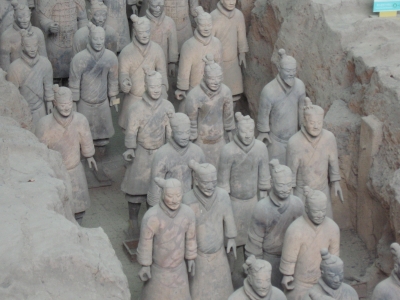
The first emperor of the famous Han dynasty was a peasant. Lui Chi led the peasant revolt that overthrew the Qin dynasty in the second century. He was given the name of Kao-tsu, after his death. The Han emperors annexed Korea in the North, and Vietnam in the South. They had to keep at bay the Hsiung-nu, the wandering horsemen of Central Asia. They established a stable empire.
The stable rule of the Han paved way for trade, along the famous Silk Road. Paper was invented in the Han period. The first suspension bridge was built, and Chinese medicine was developed. Over 17 million words were added to the law. The Han nobles led a life of luxury. The largest ethnic group in present day China is named after the Han.











